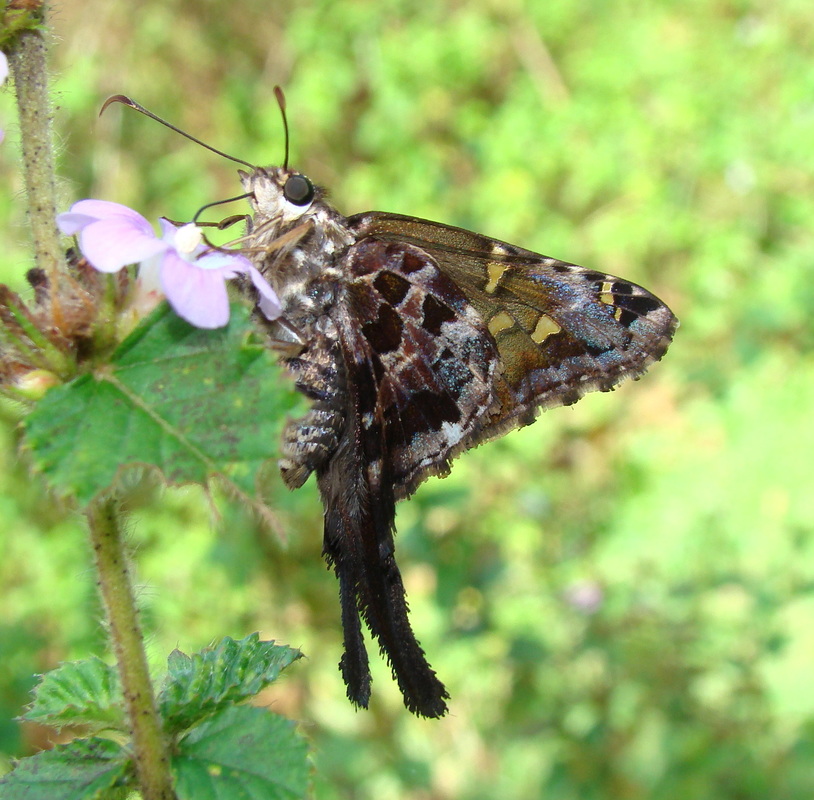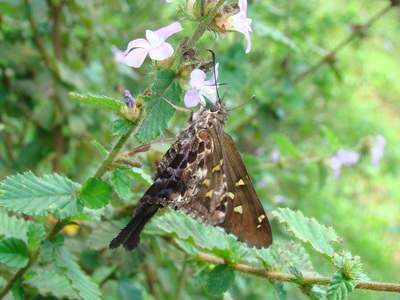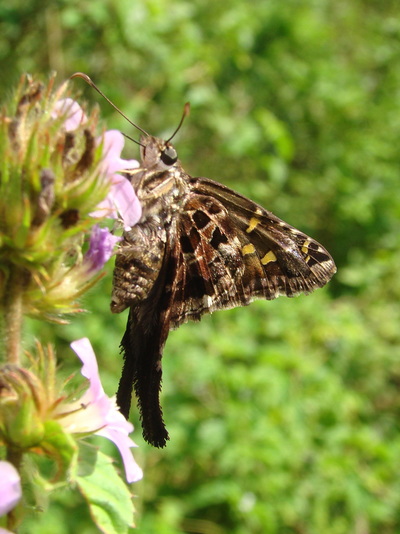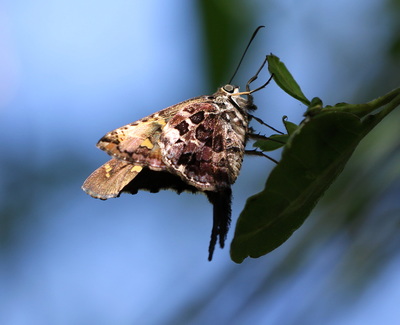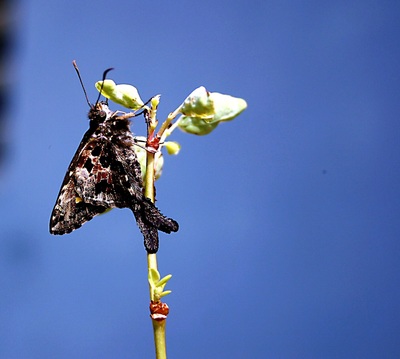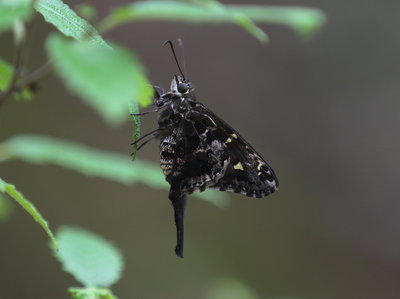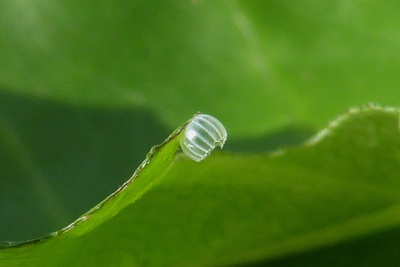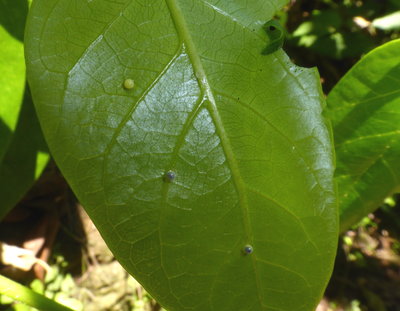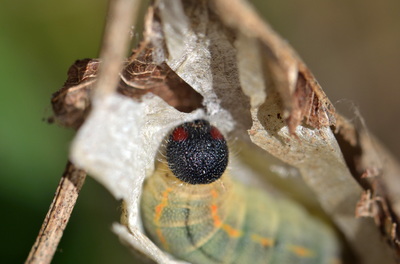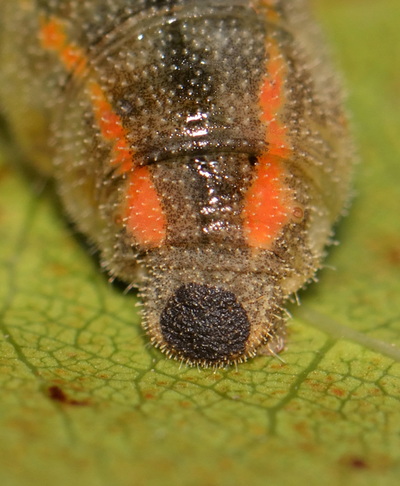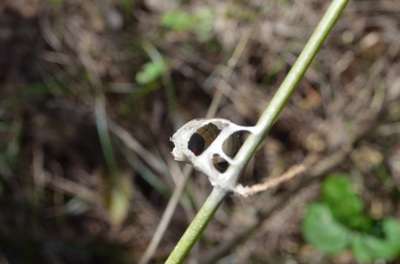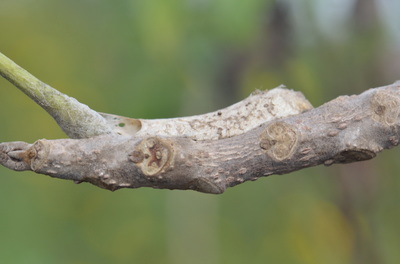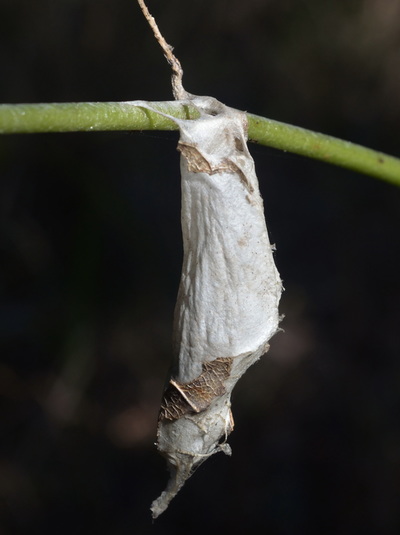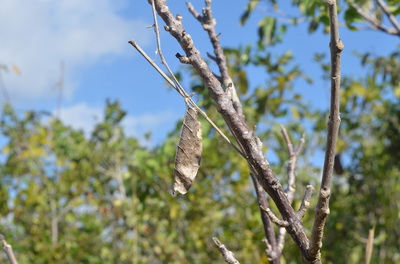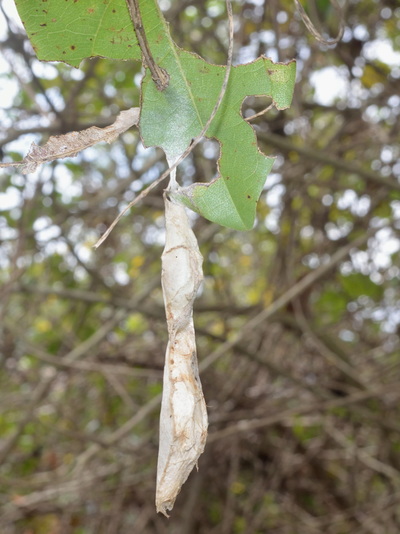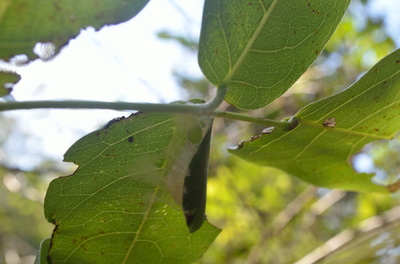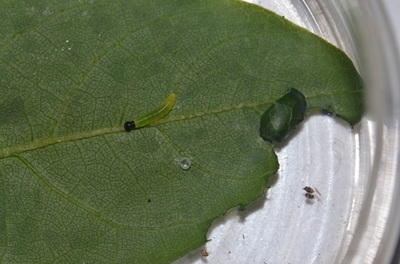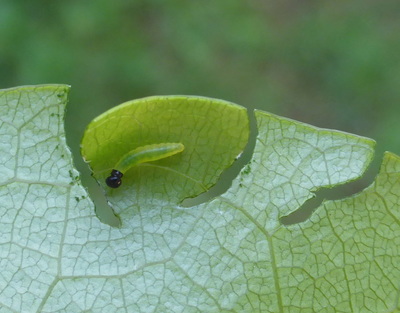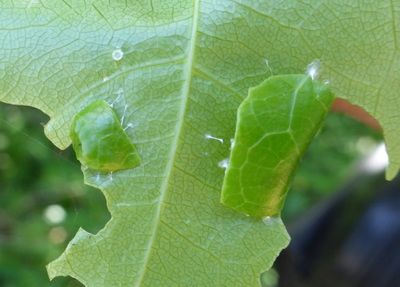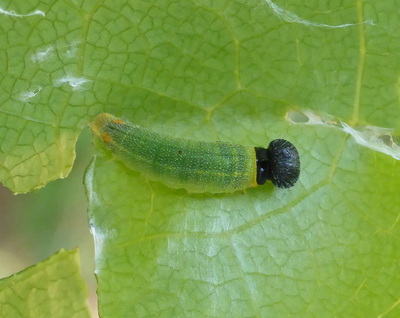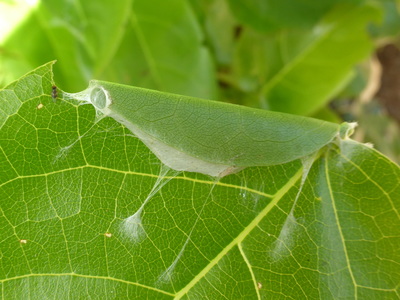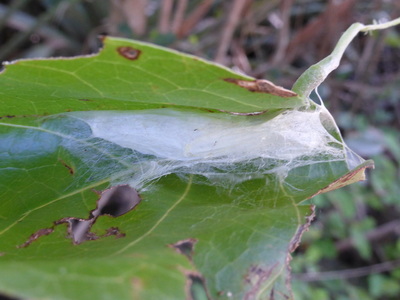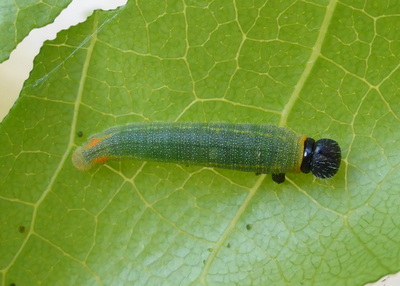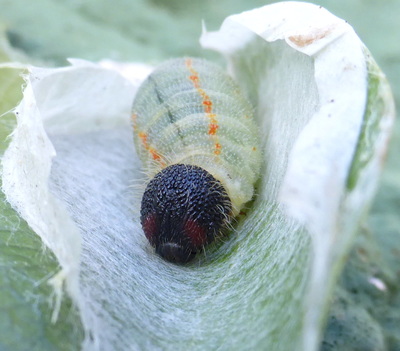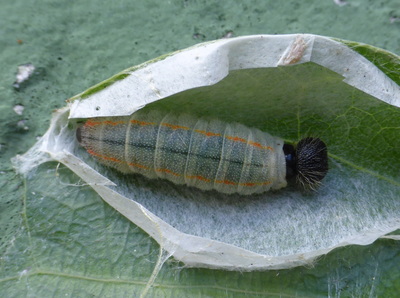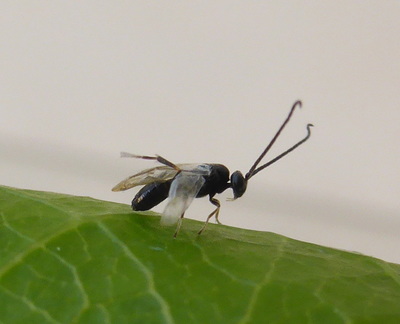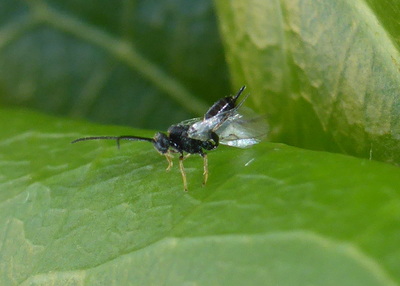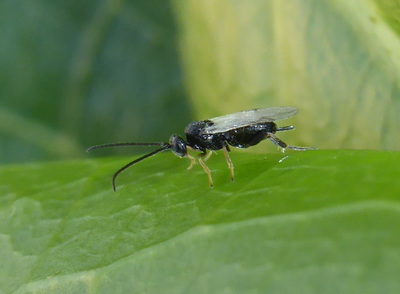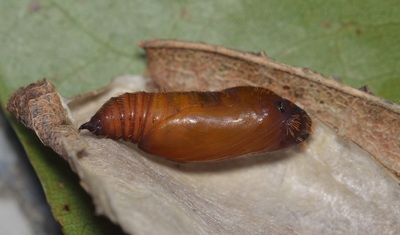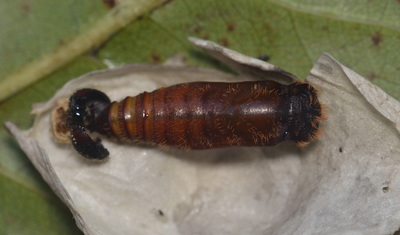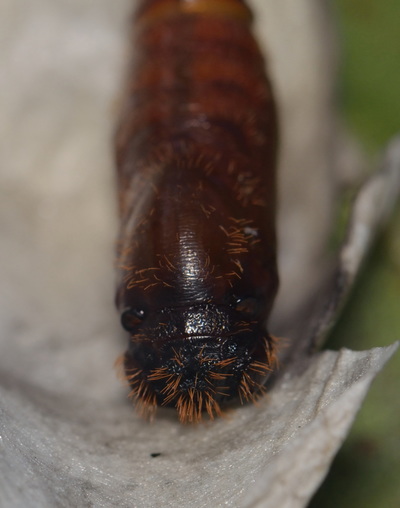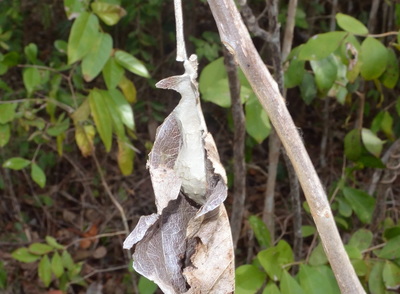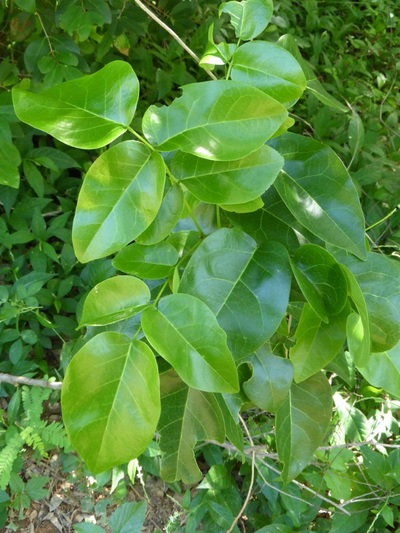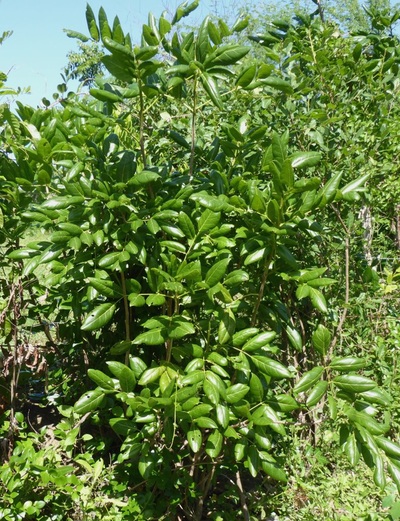Hesperiidae : Eudaminae
Chioides marmorosa (Herrich-Schäffer, 1865)
Cuban Longtail
Chioides marmorosa (Herrich-Schäffer, 1865)
Cuban Longtail
Description and Similar Species: Wingspan 38-52mm. Sexes similar. Along with the two Urbanus species this is one of three 'tailed' skippers on the island, and the only one to have such a variegated pattern with pinkish hues on the underside hindwing.
Range: Endemic to Cuba.
Status: Rare but possibly overlooked. Until 1993 it was thought to be probably extinct as there had been no records for 70 years. Since then it has been found at Soroa, Vinales and San Antonio de Los Banos in the west of the island, at Trinidad in the centre of the island, and at Gibara and Guardalavaca, Holguin province in the east. Now that the foodplant has been correctly identified as Hebestigma cubense rather than Cupania americana as previously thought it is more likely that further records will follow. Núñez and de Armas (2015) believe that it is single-brooded with adults flying between January and May, but we saw it flying in November 2015 near Gibara_Holguin after the rains had just started, and again in early October 2016 near Guardalavaca_Holguin also after rain. They also record a short-term larval diapause or dormancy due to lack of food. The larvae are prone to eat all nearby edible leaves but do not go on a wider search for food preferring to wait in a silk shelter for new leaves to grow before resuming feeding.
Nectar Plants: Erythroxylon havanense, Melochia tomentosa, Hebestigma cubense and Wedelia calycina.
Larval Foodplants: False Locust tree Hebestigma cubense growing in shade.
Range: Endemic to Cuba.
Status: Rare but possibly overlooked. Until 1993 it was thought to be probably extinct as there had been no records for 70 years. Since then it has been found at Soroa, Vinales and San Antonio de Los Banos in the west of the island, at Trinidad in the centre of the island, and at Gibara and Guardalavaca, Holguin province in the east. Now that the foodplant has been correctly identified as Hebestigma cubense rather than Cupania americana as previously thought it is more likely that further records will follow. Núñez and de Armas (2015) believe that it is single-brooded with adults flying between January and May, but we saw it flying in November 2015 near Gibara_Holguin after the rains had just started, and again in early October 2016 near Guardalavaca_Holguin also after rain. They also record a short-term larval diapause or dormancy due to lack of food. The larvae are prone to eat all nearby edible leaves but do not go on a wider search for food preferring to wait in a silk shelter for new leaves to grow before resuming feeding.
Nectar Plants: Erythroxylon havanense, Melochia tomentosa, Hebestigma cubense and Wedelia calycina.
Larval Foodplants: False Locust tree Hebestigma cubense growing in shade.
Egg
Larva
Parasites and Predators
Pupa
Foodplant and Habitat
